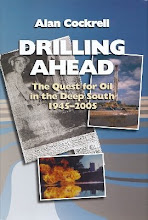 |
The very name “autopilot” evokes funny images. Who can forget Leslie Neilson using “Otto” the inflatable autopilot in the movie, Airplane? We even give our real autopilots a name: George. If anyone knows where that term comes from, post a comment. I'd like to know. In the 757/767 we have three autopilots, labled L, C and R (left, center and right). Our standard practice is to engage the C unit for normal operations. So, when we get into the air and decide to relax we punch the C button and announce “Charlie has it,” or “Charles is in charge.”
Last week you might have read the widely tooted report that pilots are losing their flying skills because of automation. (Click here.) There may be some truth to it. You do get rusty when you don't practice much. But the article alleged that safety is at stake and accidents loom if pilots don't turn George, Charlie, or Otto off more often.
But as is often the case in the circus of journalism, the truth lies in what the report does not say. Incident reports provided by the very pilots who make errors clearly indicate that most flight deviations, such as altitude busts, occur when the autopilot is off. (Why would a pilot purposely turn himself in? Immunity. If you make a mistake and the FAA knows about it because they see it on their radar, you can get protect yourself from “certificate action” by self-reporting your violation. This is a good because it allows researchers to compile data and identify trends.)
But those hand-flying errors are not because the pilots are clumsy. It's because they are overloaded with information, and distracted by radio transmissions, checklists and other possible issues. The autopilot relives their workload.
Now, here is what the report does not say: we can't keep records of errors that never get committed because the autopilots are on, preventing them from happening. Consequently, we will never know how many accidents have been prevented by cockpit automation. Thousands, I suspect. Autopilots are good stuff.
The great majority of pilots I fly with hand-fly the jet for about the first 15 minutes. That's enough time to keep your touch polished. Coming down we normally turn it off about 15 minutes out from landing in good weather and closer in, in bad weather. Some weather conditions, such as ground visibility below 1200 feet require that we let the plane land itself.
There is one thing that bugs me a bit. I ride in the back of RJs a lot. And I can hear that little "cricket" sound (two chirps) in the cockpit when they turn the autopilot off. Too often they do it very close in to the runway. It seems they overuse the autopilot. But then, I know those guys fly five and six legs a day. They get tired. Let them use it.
So be glad your pilots have got George, Charlie and Otto, and tell the “investigative reporters” to write about something they can actually observe, because they can't watch us. We work behind closed doors.
Decision Height opens them for you.
A guy walks by a bar and sees a sign advertising Happy Hour, 5-7, drinks half price. He looks at his watch. It's 4:30. He thinks this is a good place to camp for a while. He goes in and sees another sign that says all drinks 25 cents. “Wow, how do you do that?” he asks the bartender.
"I've done well. Got all the dough I need. I just like to see people happy," he says.
The guy orders his drink and looks down at the end of the bar where two guys are sitting, their heads propped on their elbows, looking at their watches.
"What's up with those guys?" he asks the bartender.
The astonished bartender looks at him and says, "What planet have you been on, Buddy? Those are United pilots. They're waiting on Happy Hour."
Changing out a flat on "Big Foot" (Boeing 777)





